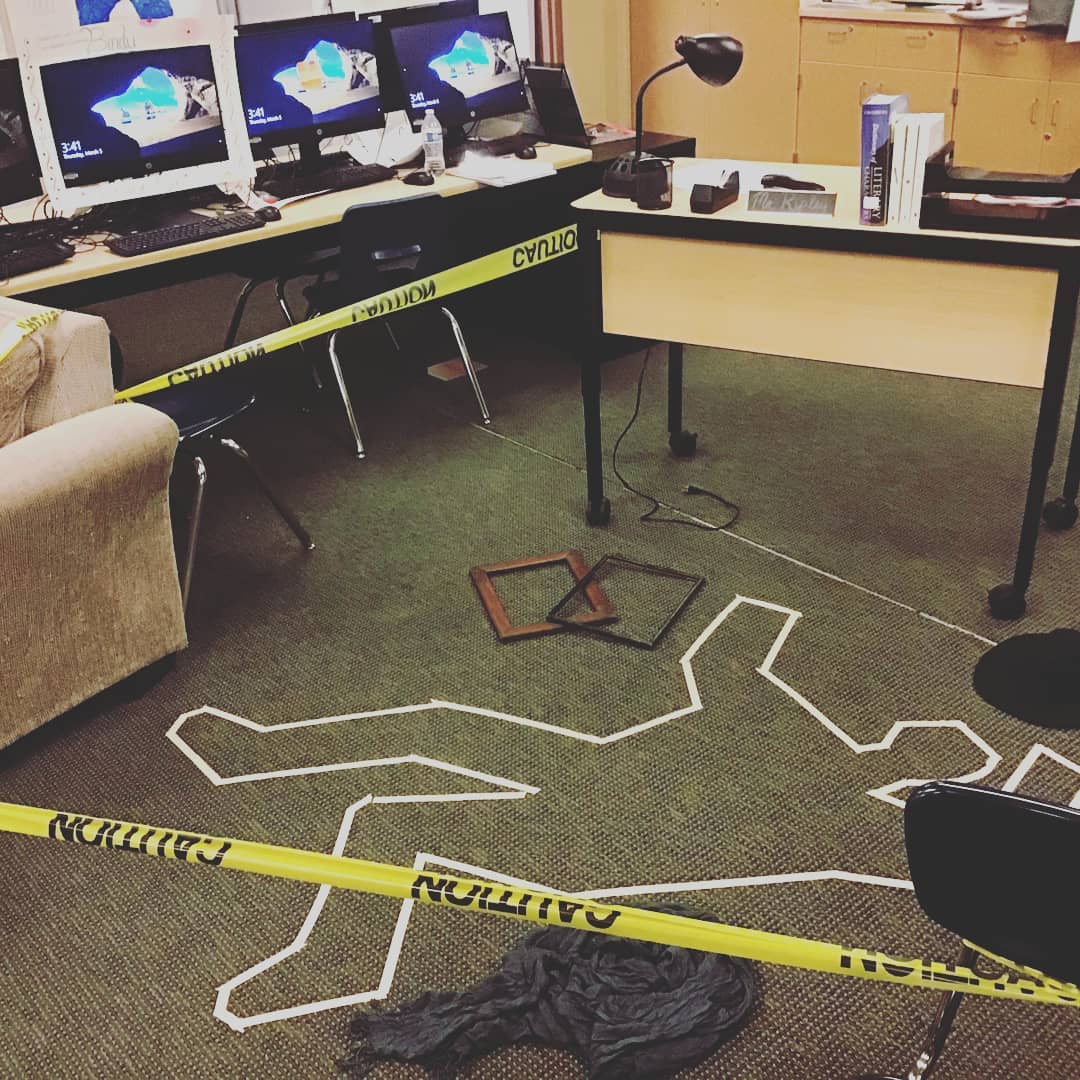|
If you are in the AP Language and Composition group on Facebook, you have probably seen the many manifestations of The Murder of Allen Ripley activity. The basic premise is that students come in to find the room transformed into a crime scene. Then, they are tasked with solving the murder. It’s a great activity to practice synthesis and line of reasoning! (MAD Shout-Out to Patti Snowden, who created and posted the assignment). Seeing all the cool posts and reactions, I was immediately sold. As a true crime fanatic… you know, the type that falls asleep to Forensic Files every night and squeals at every new crime docuseries on Netflix… I was so excited to try this out with my class. We are jumping into our next topic unit on gun violence, so it seemed like a great way to hook them. (Again - all credit to Patti Snowden. I just tweaked an already awesome learning experience). For our version of this activity, we used two days. One day for students to act as law enforcement and study the crime scene, witness testimonies, and synthesize information to create an arrest warrant. The next day, they were handed another group’s warrant and asked to act as prosecutors or defense lawyers, composing a compelling opening argument. We use standards-based grading, so we decided to assess their opening argument on Evidence and Commentary. Here is how we describe proficiency for these opening arguments:
Now… if you haven’t figured it out yet, I am admittedly super “extra” when it comes to planning lessons like this. So in addition to the activity designed so wonderfully by Snowden, I added a few more curveballs and added bonuses. Here are some ideas (and materials) that you can take to your own classroom! SETUP
LESSON Day 1: Law The first day, students are practicing synthesis and critical thinking. They treat the case file like the sources for Question 1 on the exam and make connections to defend claims about motive, opportunity, and means of operation.
Day 2: Order The second day, students are practicing on-demand persuasive writing. They are also encouraged to engage in counterargument. This practice will help with both Question 1 and 3 on the exam.
Overall, I'd say it was an overwhelming success. In the afternoon of Day 1, I had students coming to class saying such gems as: "I heard English was actually fun today!" (Eye roll.) "I'm excited to solve a murder!" "Who DIED?" And after the first day, they were asking if they could put the suspects on trial. (Had it been a more convenient time - not a couple days before the big music trip to Chicago - I would have added a full mock trial.) The fact that they were so excited about argument and reasoning is such a credit to Snowden and her great activity! If you haven't already, I STRONGLY recommend you implement this in your classroom. Have a great week, all!
8 Comments
Nadia
4/6/2020 08:03:05 pm
So who ended up committing the murder then?
Reply
Steph
4/7/2020 02:45:42 pm
There is no cut and dry answer but my kids came to concession that the wife did it
Reply
Annie White
12/15/2021 07:08:48 am
What items originally go in the crime scene? I see where you guys added a few things - I'm just trying to decide how to design mine!
Reply
Erin
1/10/2023 12:36:00 pm
I'd love to know what other props were also used. Is there an easily accessible list of props available somewhere?
Reply
Cwik
1/10/2023 02:05:25 pm
The props are listed under the video: a hat, divorce papers, pill bottle, etc. We have also placed a gray scarf since that is mentioned in the documents.
Katie
2/14/2024 10:45:53 am
Hi there!
Reply
Cwik
2/14/2024 05:37:00 pm
Hello!
Reply
Leave a Reply. |
Archives
February 2024
AuthorSteph Cwikla has been a teacher since 2012, focusing on ELA curriculum. Now, she also works as an instructional coach, helping other teachers improve engagement and instruction. |

 RSS Feed
RSS Feed